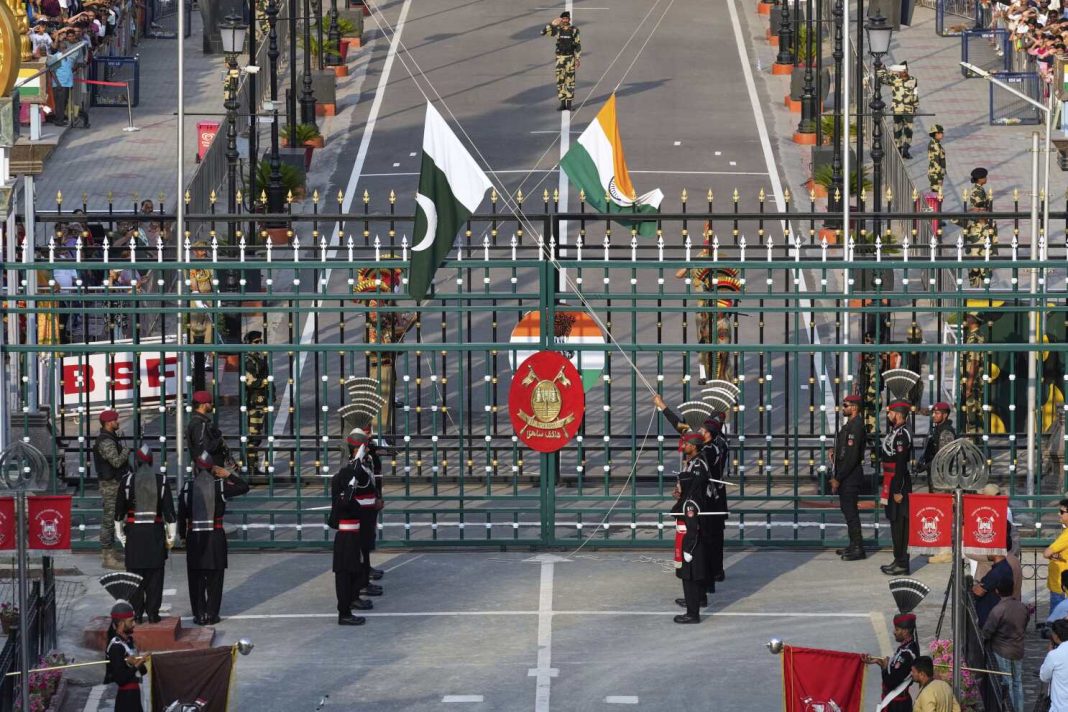In a surprising turn of events, while the usual back-and-forth rhetoric between Islamabad and New Delhi continues, the military forces of Pakistan and India have been quietly working behind the scenes to ease tensions. On Tuesday, they reached an agreement to pull back troops from their forward positions.
This decision came during a recent conversation between the director generals of military operations (DGMOs) from both nations. Interestingly, there hasn’t been any official announcement from either side regarding this development.
A senior security source shared with The Express Tribune that both countries have agreed to strengthen the ceasefire.
As part of this understanding, they plan to withdraw the troop reinforcements that were deployed during their recent conflict back to their peacetime positions by the end of May, according to a senior Pakistani security official who spoke to AFP on Tuesday.
The official also mentioned that both nations have agreed on a phased withdrawal of additional troops and the weaponry stationed primarily along the heavily militarized Line of Control (LoC).
This agreement follows a statement from the Indian army last week, indicating that both sides had committed to taking “immediate measures to ensure troop reduction from the borders and forward areas.”
“Initially, all these steps were supposed to be wrapped up within 10 days, but a few minor issues have caused some delays,” the Pakistani official noted.
The source emphasized that both countries are proceeding with caution, which is why they haven’t been issuing regular updates.
The ceasefire that the US helped negotiate was reached on the evening of May 10, just as both countries were teetering on the brink of a full-blown conflict.
This marked the first time since both nations became nuclear powers that they had exchanged missiles and drones aimed at each other’s military sites. The tension escalated after India launched missile strikes on the night of May 6 and 7, targeting what it claimed were terrorist camps—a claim that Pakistan strongly denied. Islamabad presented undeniable evidence showing that the casualties from these strikes included innocent civilians, some as young as two years old.
In response to the Indian attacks, Pakistan successfully shot down six Indian fighter jets, including advanced French-made Rafales. Just three days later, Pakistan retaliated by targeting over two dozen military sites deep within India, sending a clear message that it would not accept any new status quo.
During this period, major world capitals were increasingly alarmed by the rapid escalation, which prompted the US to step in. Initially hesitant, the Trump administration eventually took action and successfully brokered a ceasefire.
As part of the ceasefire agreement, the US announced that Pakistan and India would begin discussions on a wider range of issues at a neutral location. Pakistan welcomed this development, while India refrained from commenting directly, emphasizing that any talks should focus solely on terrorism and the portion of Kashmir currently under Pakistan’s control.
When asked about the situation, a source mentioned that while military-level discussions were progressing steadily, there was still no sign of when political negotiations might kick off.
The sources pointed out that despite some provocative remarks coming from New Delhi, including statements from the Indian defense minister suggesting that Pakistan was on “probation” and that “Operation Sindoor” was merely on hold, the Indian military was actually sending a different message altogether. They noted that the Indian military was eager to uphold the ceasefire. On the other hand, Pakistani officials stressed their commitment to maintaining the truce. During the last weekly briefing, the Foreign Office spokesperson reiterated that Pakistan always favored diplomacy over conflict and aimed to resolve all outstanding issues with India, including the Jammu and Kashmir matter, through peaceful means.
Shafqat Ali Khan, however, made it clear that Pakistan’s pursuit of peace should not be interpreted as a sign of weakness.
In a separate interview with a foreign media outlet, DG ISPR Lt General Ahmed Sharif Chaudhry cautioned that Pakistan would respond decisively if India attempted any misadventures. He also emphasized that Pakistan would never accept Indian dominance. (With input from AFP)
For the latest updates and insights on new developments, visit the NEWSON


